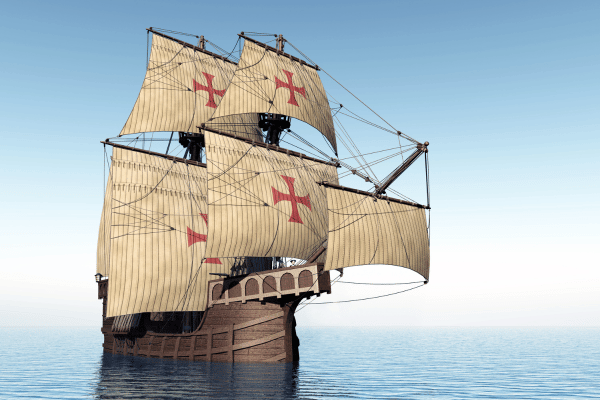The Archdiocese of Colombo is the Metropolitan See of the Catholic Church in Sri Lanka, serving as the spiritual, pastoral, and administrative center of the faithful in the region. With a rich history spanning over centuries, the Archdiocese stands as a beacon of faith, evangelization, and service to the people of Sri Lanka.
Early Ecclesiastical Administration
The first ecclesiastical administrator of what is now the Archdiocese of Colombo, along with the rest of Sri Lanka, was the Portuguese layman Miguel Vaz Coutinho. He governed the Diocese of Goa—the first diocese in Portuguese Asia—after its establishment in 1534. Four years later, in 1538, the Spanish Franciscan Juan de Albuquerque was appointed as the first bishop of Goa, and Miguel Vaz became his Vicar General.

For centuries, Sri Lanka remained under the jurisdiction of Indian dioceses: first Goa (1534–1558), then Cochin (1558–1834). In 1834, the island was designated as an independent ecclesiastical territory and became the Diocese of Ceylon, formally erected on 3 December 1834, as a Vicariate Apostolic.
Colombo Rises to Prominence
Colombo emerged as Sri Lanka’s civil, commercial, and ecclesiastical center, particularly after 1565, when King Dharmapala and his court relocated following the abandonment of Kotte. This prominence grew when the Kingdom of Kotte came under direct Portuguese rule after Dharmapala’s death in 1597.
The Franciscans, Jesuits, Dominicans, and Augustinians established their main residences in Colombo. The Franciscans founded the College of St. Anthony, while the Jesuits established an educational institution that became the most renowned on the island.
During the Dutch era, the Catholic Church faced severe persecution. Amidst this, Fr. Joseph Vaz arrived in Sri Lanka to rekindle the faith. Using Colombo as a base, he traveled across the island, ministering to Catholics. By the late 18th century, as persecution eased, the Catholic center moved to Bolawatte, and later to St. Lucia’s Church, Kotahena, which eventually became the Cathedral Church of Colombo.
Colombo Becomes the Headquarters of the Vicariate
On 3 December 1834, Sri Lanka was detached from the Diocese of Cochin and formally became the Diocese of Ceylon. In 1838, the Indian Oratorian Vicente de Rosayro was appointed as its first Vicar Apostolic, succeeded in 1843 by Caetano Antonio.
As the Goan Oratory could no longer send missionaries following its suppression in 1834, the Congregation of Propaganda Fide sent European clergy. Among them was the Italian Oratorian Orazio Bettachini, who became coadjutor to Caetano Antonio and was consecrated at St. Lucia’s Church, Kotahena, on 8 February 1846, marking Sri Lanka’s first episcopal ordination.
On 17 February 1845, the Diocese of Ceylon was renamed the Diocese of Colombo (Columbensis).
In 1849, the northern regions (Northern, Eastern, North Central, and North Western Provinces) were separated to form the Vicariate Apostolic of Jaffna, with Orazio Bettachini as its first Vicar Apostolic. The remaining areas continued as the Vicariate Apostolic of Colombo, under Bishop Caetano Antonio.
The Vicariate of Colombo Becomes an Archdiocese
Colombo’s ecclesiastical leadership transitioned under Italian Sylvestrines: Giuseppe Bravi (1857), Hilarion Sillani (1863), and Clement Pagnani (1879). Due to personnel shortages, the Holy See entrusted the Oblates of Mary Immaculate (OMI) with the vicariate. In 1883, Christopher Bonjean, OMI, was appointed Vicar Apostolic of Colombo.
On 1 September 1886, the Church hierarchy in Sri Lanka was formalized, and Colombo was elevated to an Archdiocese, with Jaffna and Kandy as suffragan dioceses. Christopher Bonjean became the first Archbishop of Colombo.
On 6 December 1944, the title was modified to Archdiocese of Colombo in Ceylon (Columbensis in Ceylon).
Leadership of the Archdiocese
Following Archbishop Christopher Bonjean, the Archdiocese was led by a succession of French Oblates:
- Andrew Melizan, OMI (1893–1905)
- Antony Coudert, OMI (1905–1929)
- Peter Marque, OMI (1930–1937)
- John Mary Masson, OMI (1938–1947)
In 1947, Thomas Benjamin Cooray, OMI, became the first Sri Lankan Archbishop and, in 1965, Sri Lanka’s first Cardinal.
After nearly a century of Oblate leadership, Archbishop Nicholas Marcus Fernando (1977–2002) became the first secular priest to lead the Archdiocese.
He was succeeded by:
- Archbishop Oswald Thomas Colman Gomis (2002–2009)
- Archbishop Albert Malcolm Ranjith Patabendige Don (2009–present)
In 2010, Archbishop Malcolm Ranjith was elevated to Cardinal, becoming Sri Lanka’s second Cardinal after Thomas Cooray. He continues to serve as the Archbishop of Colombo today.
